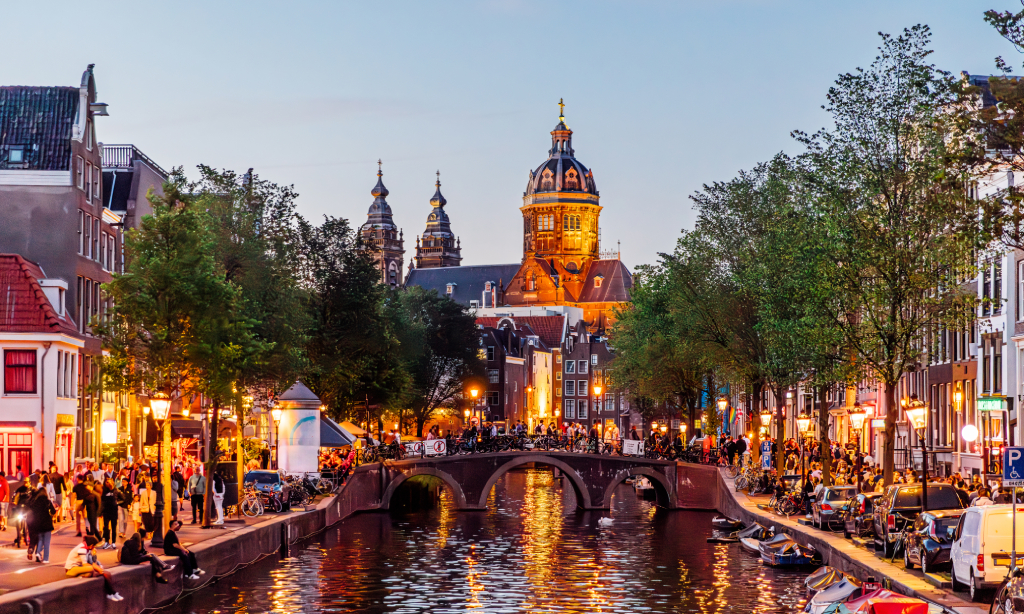If you can show me someone under the age of 22 who knows what a Lonely Planet Guidebook is, I’ll be impressed.
In years gone by, travellers relied on word-of-mouth tips, Google searches, blogs and — gasp! — actual tangible guidebooks they’d lug around on trips. But nowadays, all you need to plan a trip is a TikTok account.
Nearly two-thirds of Aussies under the age of 25 say they use TikTok as their first port of call when looking for travel inspo. They’re not even starting with a ‘coolest cafes in Paris’ Google search, they’re heading straight to TikTok.
It’s not just Gen Z, though. An Amex study from last year found that 44 per cent of Australians have booked a ticket to a destination because they saw it on social media.
In a way, having TikTok as a primary source for holiday planning makes sense. The app is built to be engaging. It’s visual, which lends itself to travel recommendations. Videos are easily shareable and saveable, and the search function on there is pretty good.
Of course, social media – Instagram, YouTube, even Reddit – has played a big part in travel planning, at least during the last decade.
But there’s something about TikTok that just feels different. Not only is it changing the way people travel – seeking out photogenic moments instead of core memories – but the rise of TikTok’s popularity has also coincided with a huge surge in the number of people travelling overseas each year.
More people than ever, particularly those in their 20s, are taking extended holidays, even going into credit card debt to do so.
Yes, it would be unfair to pin this entirely on TikTok. We all spent years in lockdown and are now leaning into the ‘yolo’ of it all.
But the TikTokificiation of travel is undoubtedly a bad thing.
This year, there have been more headlines than ever about locals dealing with the effects of overtourism. Venice introduced a daily tourist tax, a small Japanese town put up a giant wall to block views of Mt Fuji, and a Spanish neighbourhood had a bus route removed from Google Maps after elderly locals living near a tourist attraction couldn’t get home.
Plus, let’s talk about how not all the knowledge being shared on TikTok is good. Places tend to go viral because they’re photogenic, they look good in Insta pics and short-form video. But there’s no guarantee that these cafes, restaurants, bars, whatever, are actually any good.
I found a Reddit thread from someone who’d just returned from Krakow, a Polish city known among travellers for its cheap beer and party vibes, who compared what they saw on TikTok to its reality.
Skipping over the mindfuck that is the mention of Auschwitz and a viral TikTok bar in the same paragraph, the post is a litany of reasons why the places this traveller had bookmarked didn’t measure up in reality.
Comments like “the queue for here was ridiculous so we didn’t bother”, “built for photos rather than products”, “when it’s busy it’s hell on earth”, and “people literally go [here] for Instagram likes,” show exactly the problem with TikTok travel recommendations.
Sure, those bubble pancakes will look fab in your Instagram photo dump, but is it worth waiting an hour and spending $20 on sub-par food, when you could get the best pierogies of your life next door?
The prevailing vibe on TikTok right now is “the money will come back but you’ll never be in your early 20s travelling Europe again”.
Which is fair. But it feels like the way people are travelling has totally shifted.
A backpacking trip through Europe in your early 20s used to be synonymous with hostels, cheap overnight buses, and finding destinations where your dollar would go further.
Now, Gen Z is spending all their cash (and going into thousands of dollars of debt) on flashy trips that’ll look good on social media. There’s a perception that “backpacking” Europe means beach clubs in Mykonos, yacht parties in Dubrovnik, $500 hotels on the Amalfi Coast and lake views in Lake Como.
And while those are all fab things I’d love to have on my trip itinerary, I’d argue it’s much better to spend a quarter of the price on a longer and more low-key trip.
But it all comes back to the fear of missing out. A feeling of ‘I can’t possibly go to Paris and not get that viral hot chocolate’, or ‘there’s no point going to Santorini if I can’t get pics of our cliffside villa’.
And because it’s so easy to find inspiration for these popular spots — the Amalfi Coast, Greek Islands, etc — everyone just keeps going there instead of venturing further afield.
While I’m not advocating we ban all travel videos from TikTok, or that anyone who follows them is wrong, I just don’t believe it’s a good thing that the platform is being used as the basis for a whole trip.
At the risk of sounding like the ‘old man yells at cloud’ meme, things were better back in the days of the physical Lonely Planet books. Travel should be about collecting memories, not aesthetic content.
Related: The Way We Travel Is Changing, and That’s a Good Thing
Related: 10 Best Cities Around the World to Travel Solo
Read more stories from The Latch and subscribe to our email newsletter.

